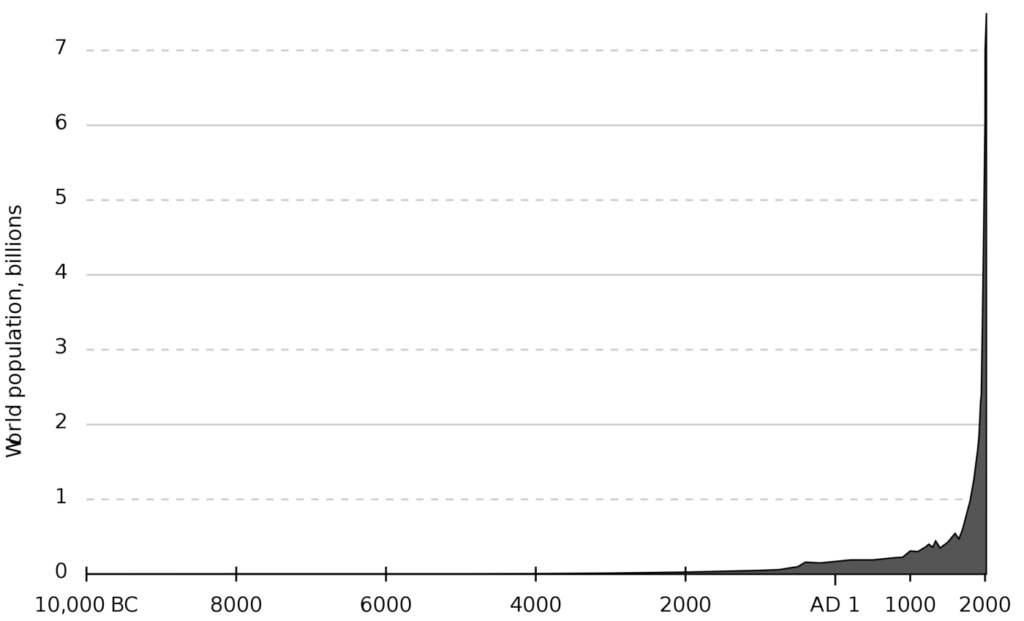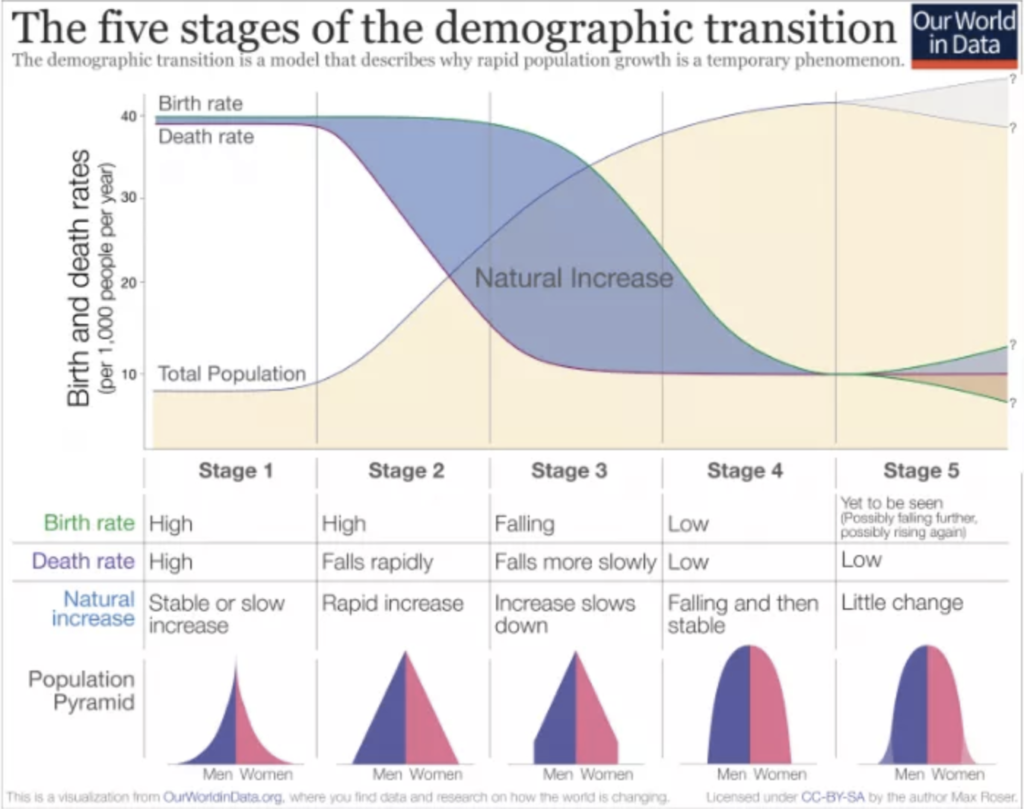Repost from The Medium. By Tim Ventura. Published on Nov 20, 2019 · 4 min read

Back in 1968, Stanford Professor Paul Erlich prefaced his non-fiction best-seller, The Population Bomb, by saying, “The battle to feed all of humanity is over. In the 1970s hundreds of millions of people will starve to death in spite of any crash programs embarked upon now. At this late date nothing can prevent a substantial increase in the world death rate…”Back when he wrote the book, the global population was around 3.5 billion people. Right now, we’re at around 7.7 billion — and climbing — but somehow we’ve managed to avoid the Malthusian Catastrophe that Erlich predicted.

Critics of his doomsday prophecy typically cite advances in technology — such as the green revolution in the late 60’s — as increasing the production of food enough to avoid global famine. Technology can’t solve every problem, though, and as population continues to increase, it will stretch the Earth’s global carrying capacity to the breaking point.
Victims Of Our Own Success
So how did we get here? Overpopulation is a crisis driven by advances in farming, medicine, and technology over the last century that have reduced mortality rates worldwide, while eliminating natural population controls like starvation & plagues. According to Vox:“The current global population has crossed 7.5 billion and is heading upward. The latest UN projections have it hitting 8.6 billion by 2030, 9.8 billion by 2050, and 11.2 billion by 2100. Average fertility rate will decrease, but that effect will be overwhelmed by the absolute numbers.”No one can ethically argue that war, starvation or disease are good things — and yet these effectively served as positive population checks for millenia. Our very success in improving our lives on this planet has led to overpopulation as an unintended side-effect.
The Problem That Solves Itself
Fortunately, and paradoxically, despite record high numbers of human beings on the planet, our population growth is actually slowing. Slate writes:According to a2008 IIASA report, if the world stabilizes at a total fertility rate of 1.5 — where Europe is today — then by 2200 the global population will fall to half of what it is today. By 2300, it’ll barely scratch 1 billion.According to the Denver Post, a report by the US Census bureau late last year showed US population growth of only 0.7% — less than at any time since the Great Depression. Reporter Stephen Mihm writes:“Birthrates dropped dramatically over the course of the Industrial Revolution in Europe and the U.S. This was particularly true for the middle classes, where declines in fertility were especially pronounced. Unlike farm families, middle-class families living in cities no longer needed as many children, and the demands of industrial society encouraged them to invest more resources — money, time, calories, education — in fewer offspring.”These statistics are encouraging, because without a reduction in birth rates the ever increasing human population would have otherwise outstripped our ability to support it, which would ultimately lead to natural controls like war, disease, and starvation that would likely trigger a mass population crash after having been absent for so long.
Demographic Transition
The big question is how Malthus, Erlich, and many others could have been so wrong about overpopulation. What did they miss?The answer is what’s called a demographic transition, in which a society moves from a high fertility & mortality rate to a low fertility & mortality rate.

In less advanced, agricultural societies, people had more children to offset the higher mortality rate — but as society became more advanced, fewer people die early in life, and fewer people are choosing to have children.In other words, it appears that the very same advances in modern civilization that allowed world population to soar are now slowing its growth. Advances in education, women’s rights, birth control, and overall social wealth are reducing birth rates.
Where’s It End?
Where will human population peak before it begins to fall? The United Nations estimates a peak population in 2100 of 11.2 billion people, but others, such as the Norwegian climatologist Jørgen Randers, see the population peaking sooner at a much lower number — only 8 billion people with a peak in 2040.After the peak, the overall population will begin to decline, and if that trend becomes the new norm, in a century perhaps all countries will be paying people to have children like city of Nagi-cho in Japan currently does.While underpopulation is a welcome solution to the promised apocalypse of runaway overpopulation, it brings its own set of issues, including the overall aging of the population and a shrinking workforce & tax-base that can lead to economic stagnation.Still, tax woes are far more welcome than running out of global resources & starving to death, and it’s far more palatable to pay people to have children than restrict them from having them.

















